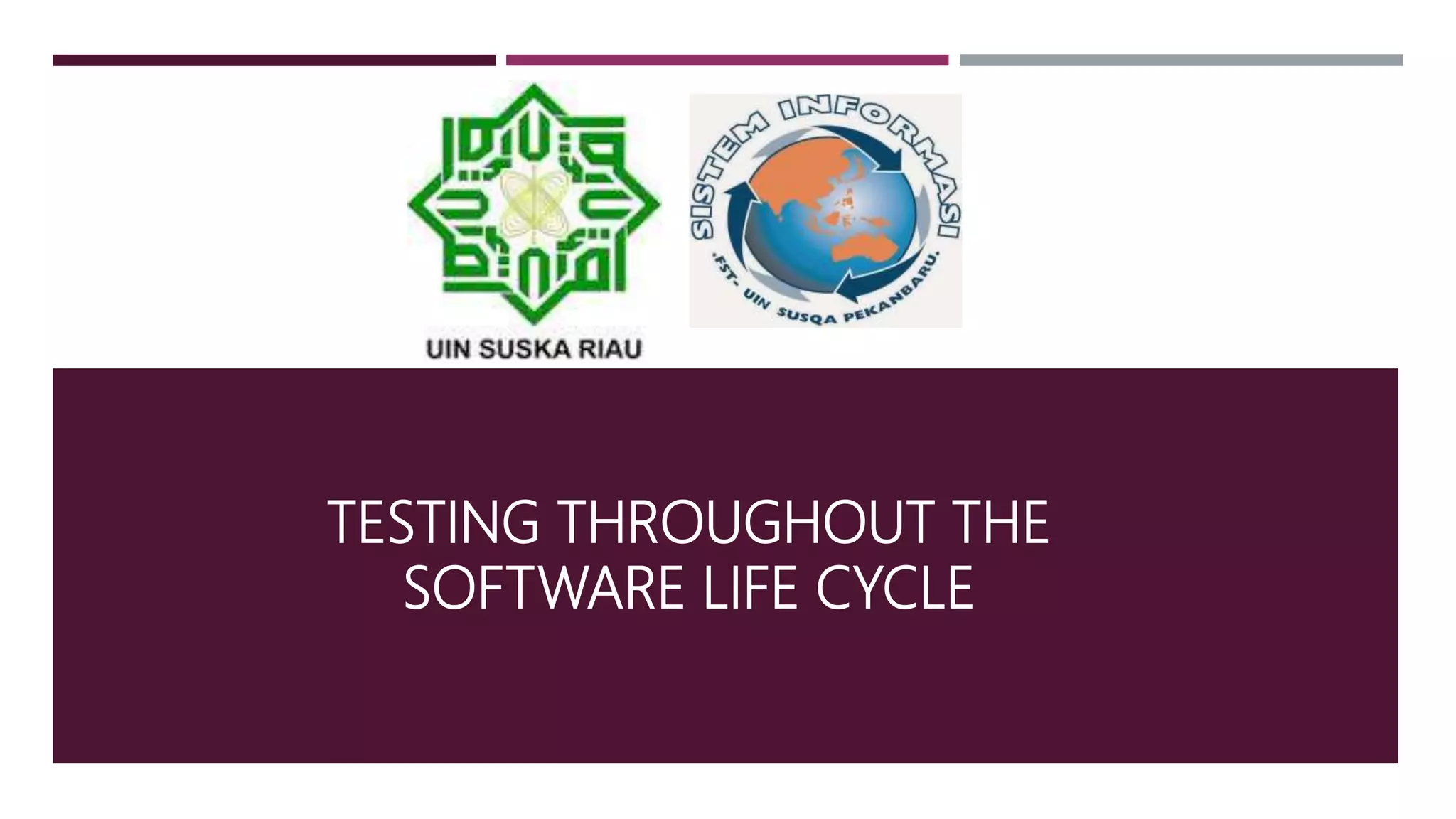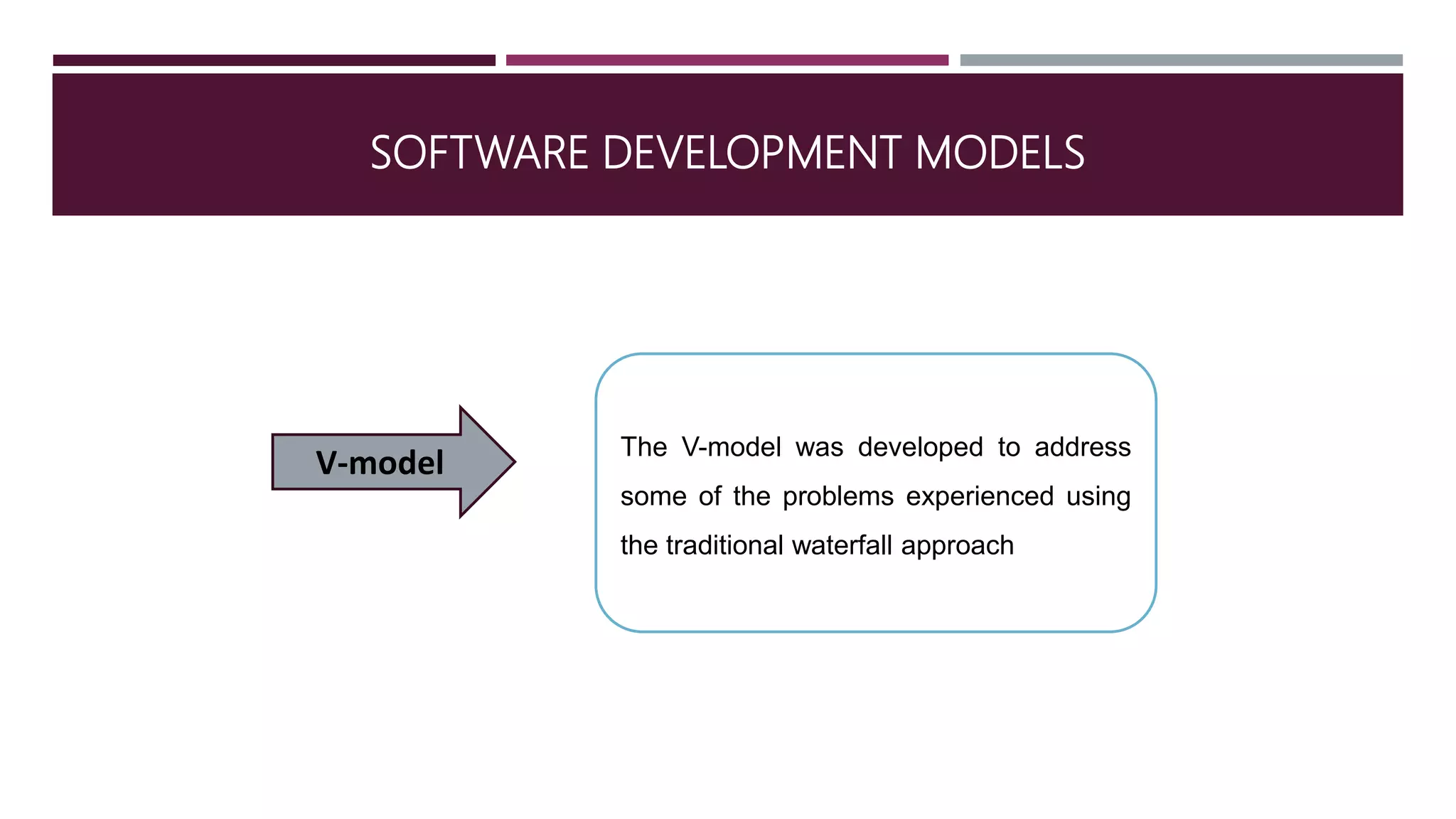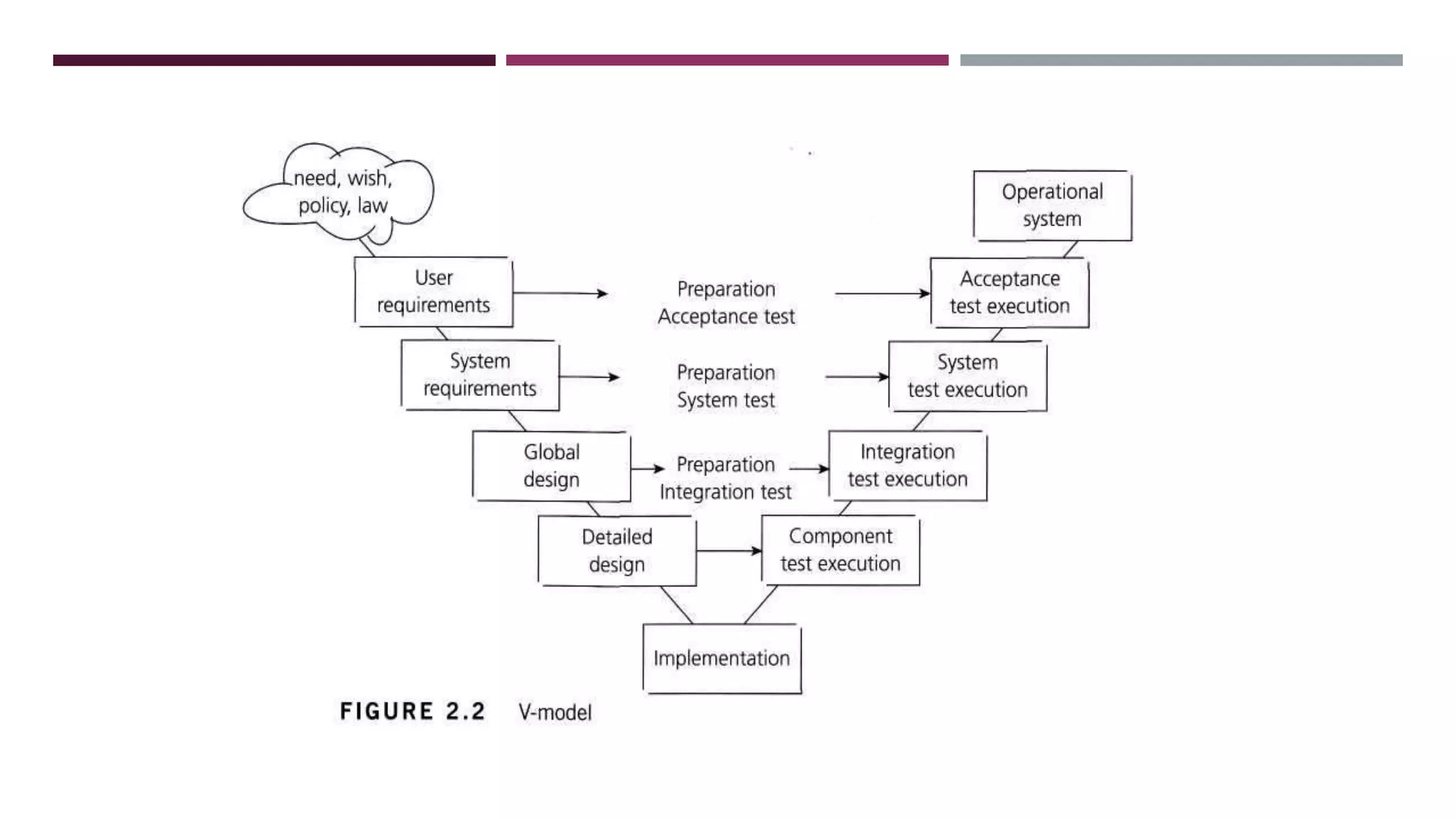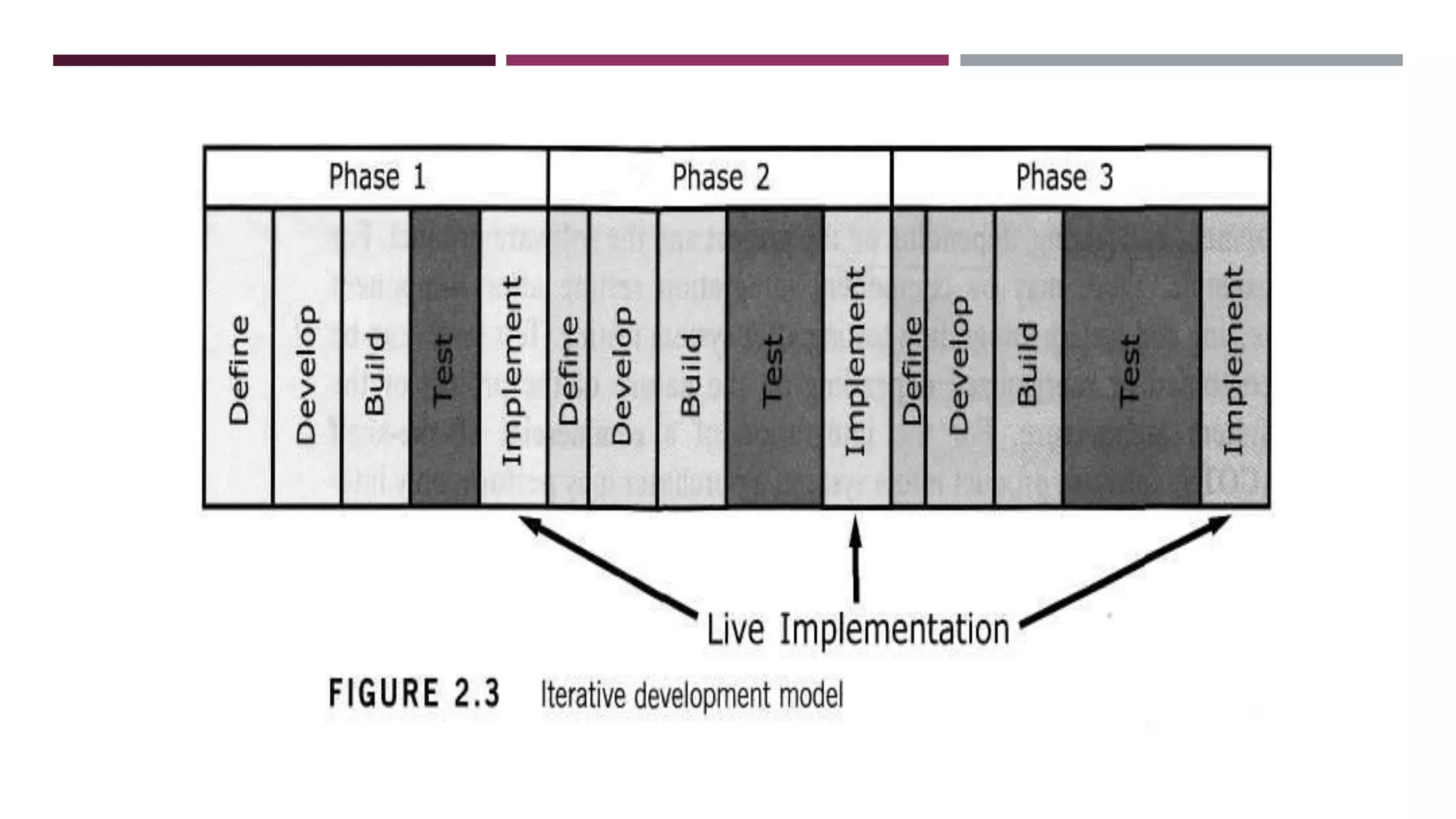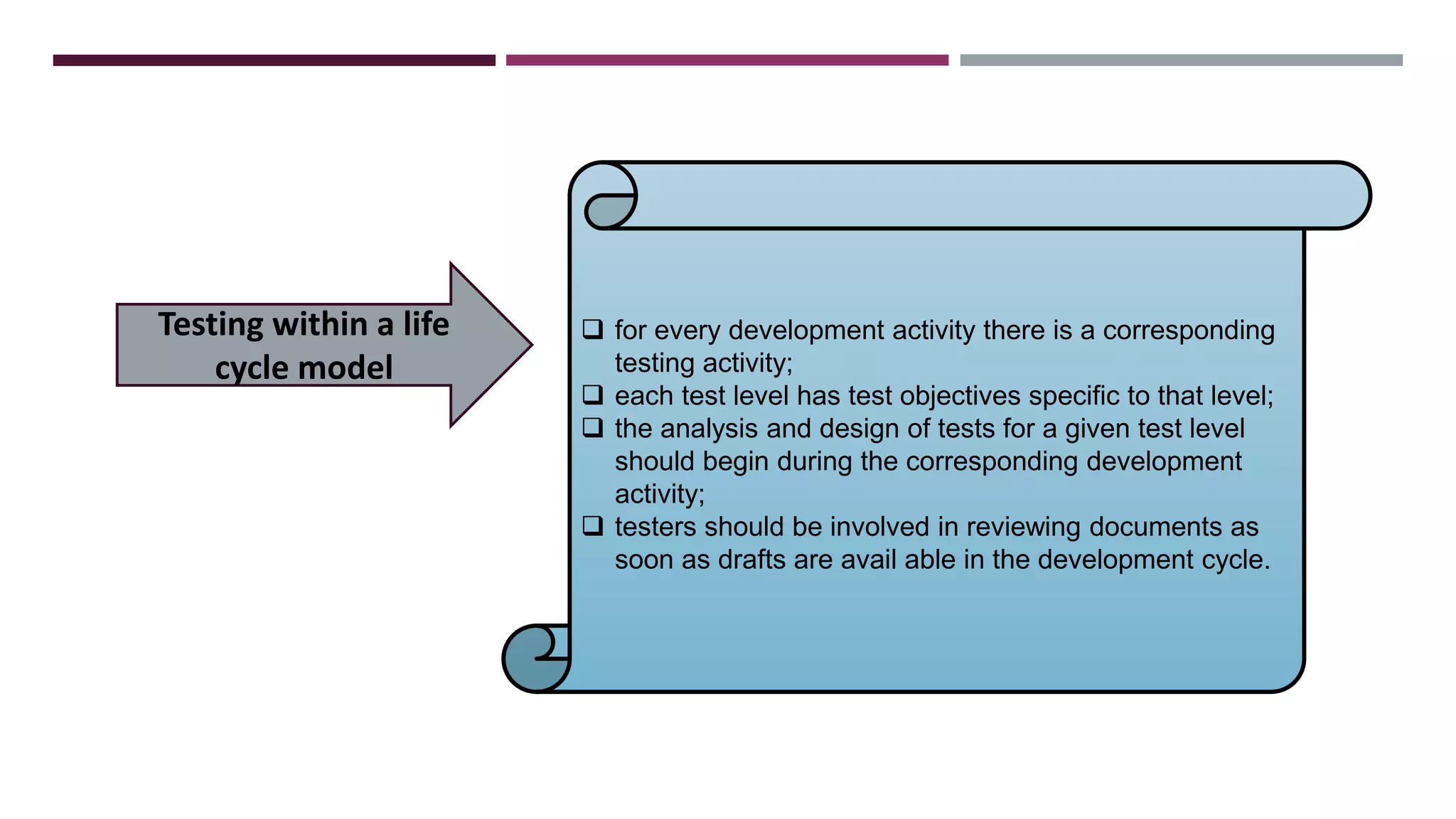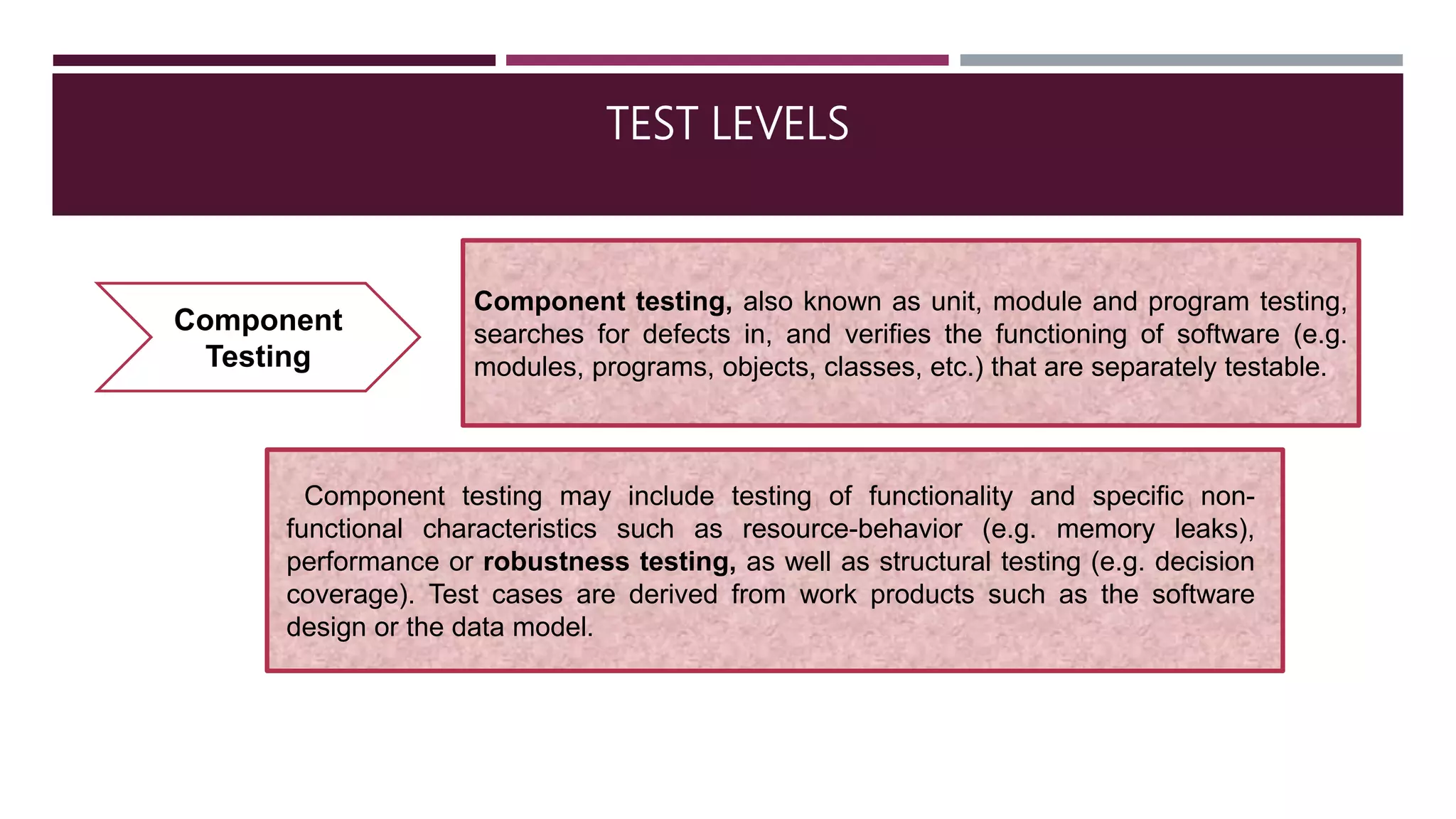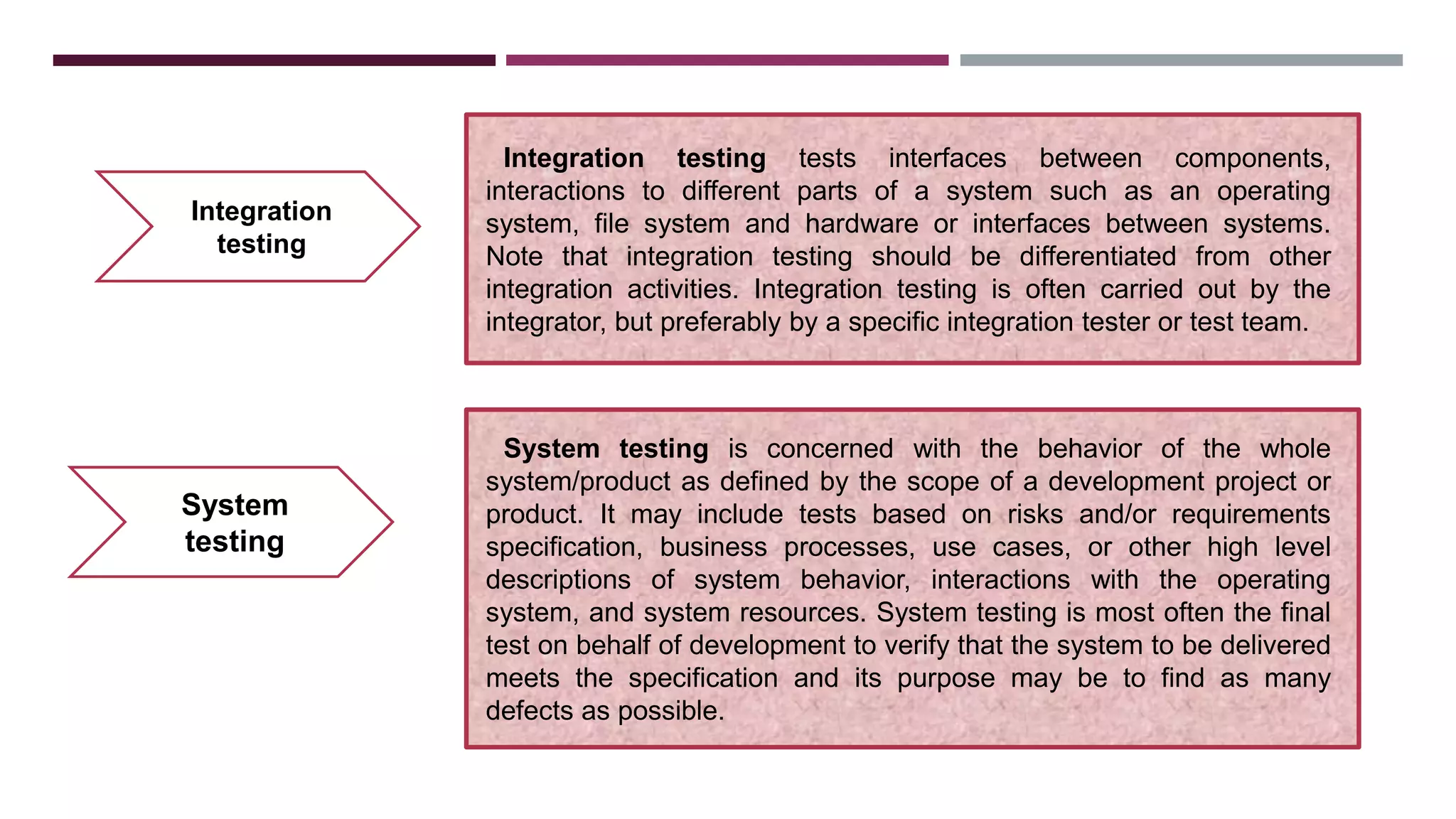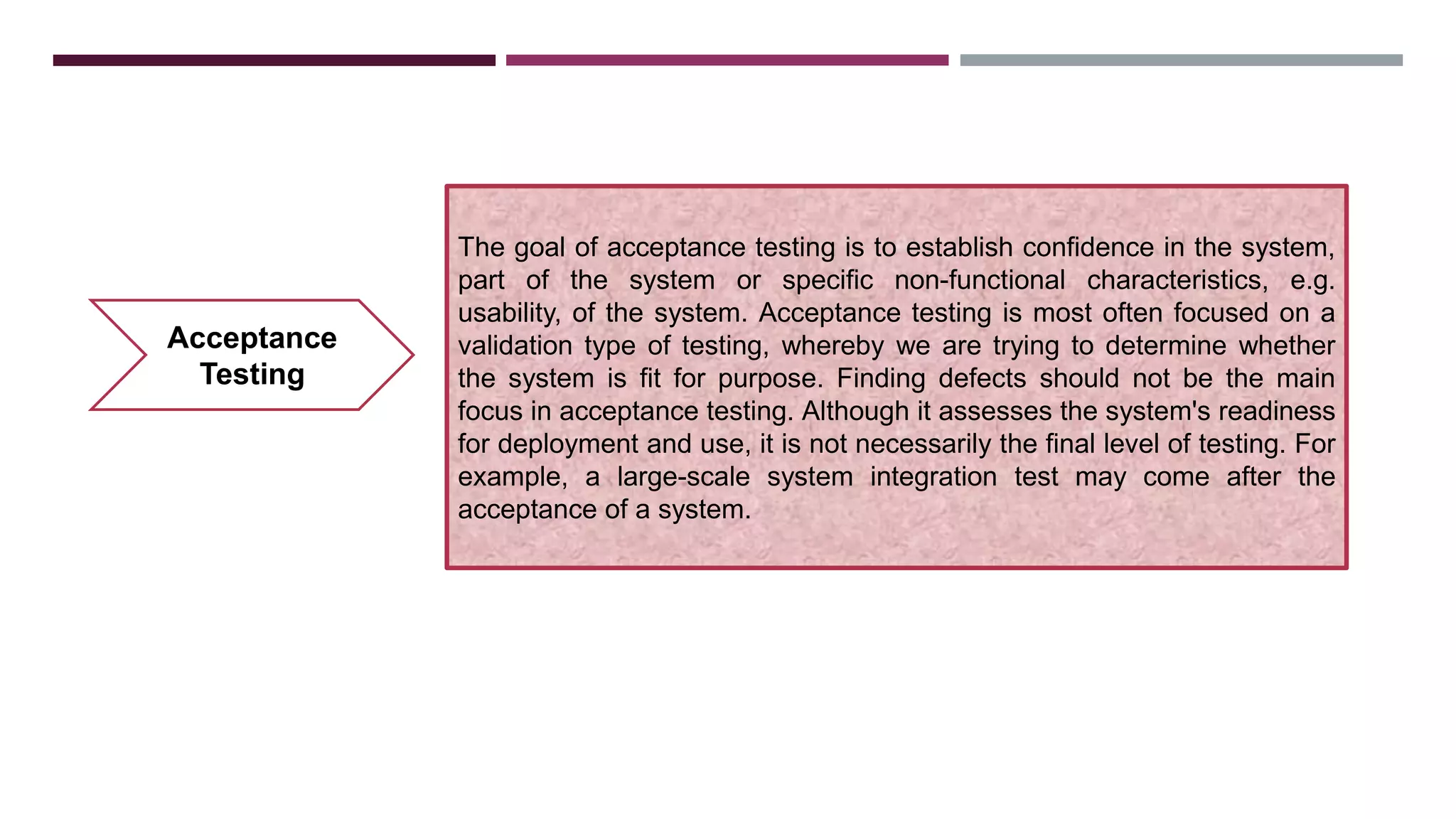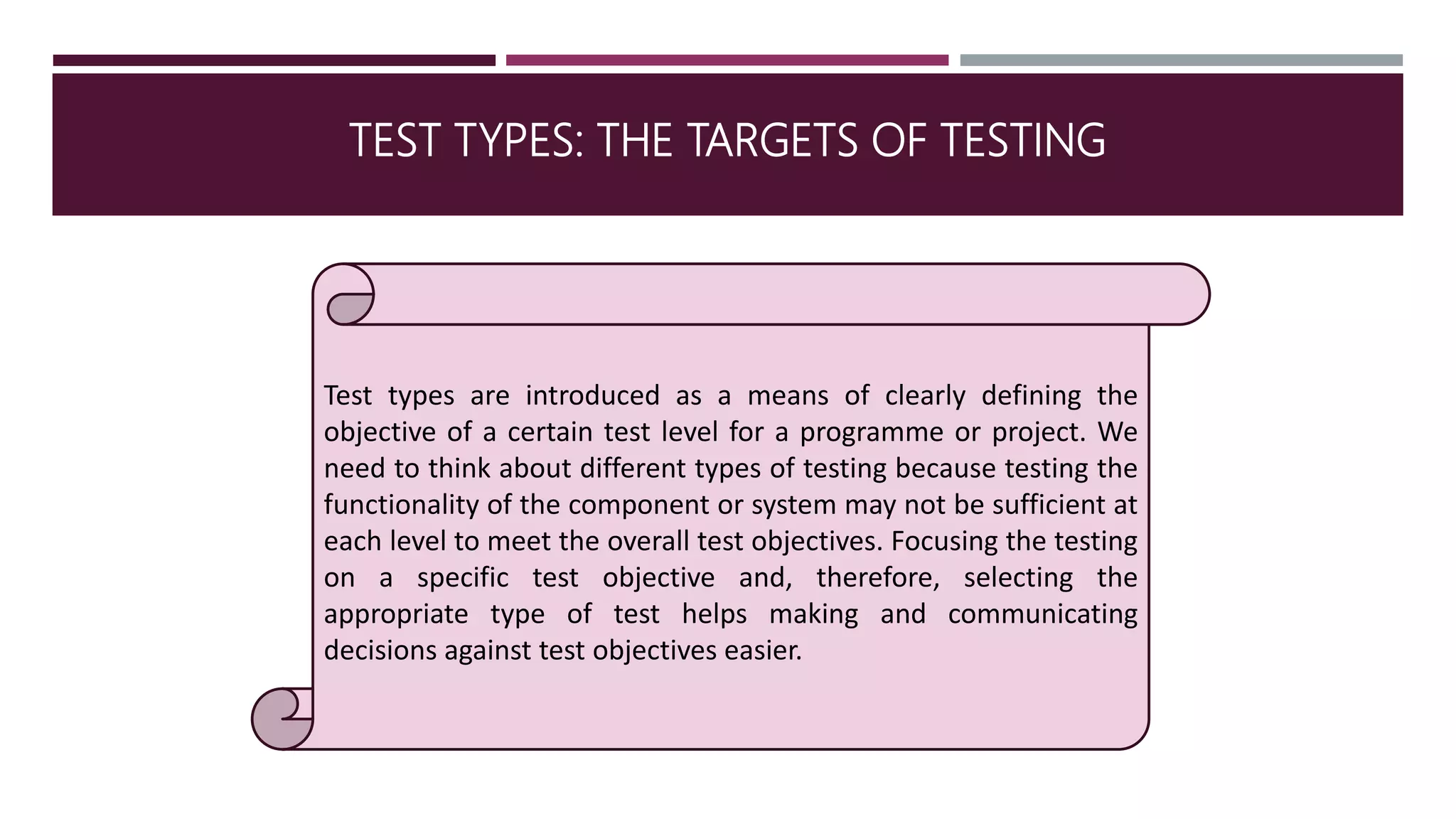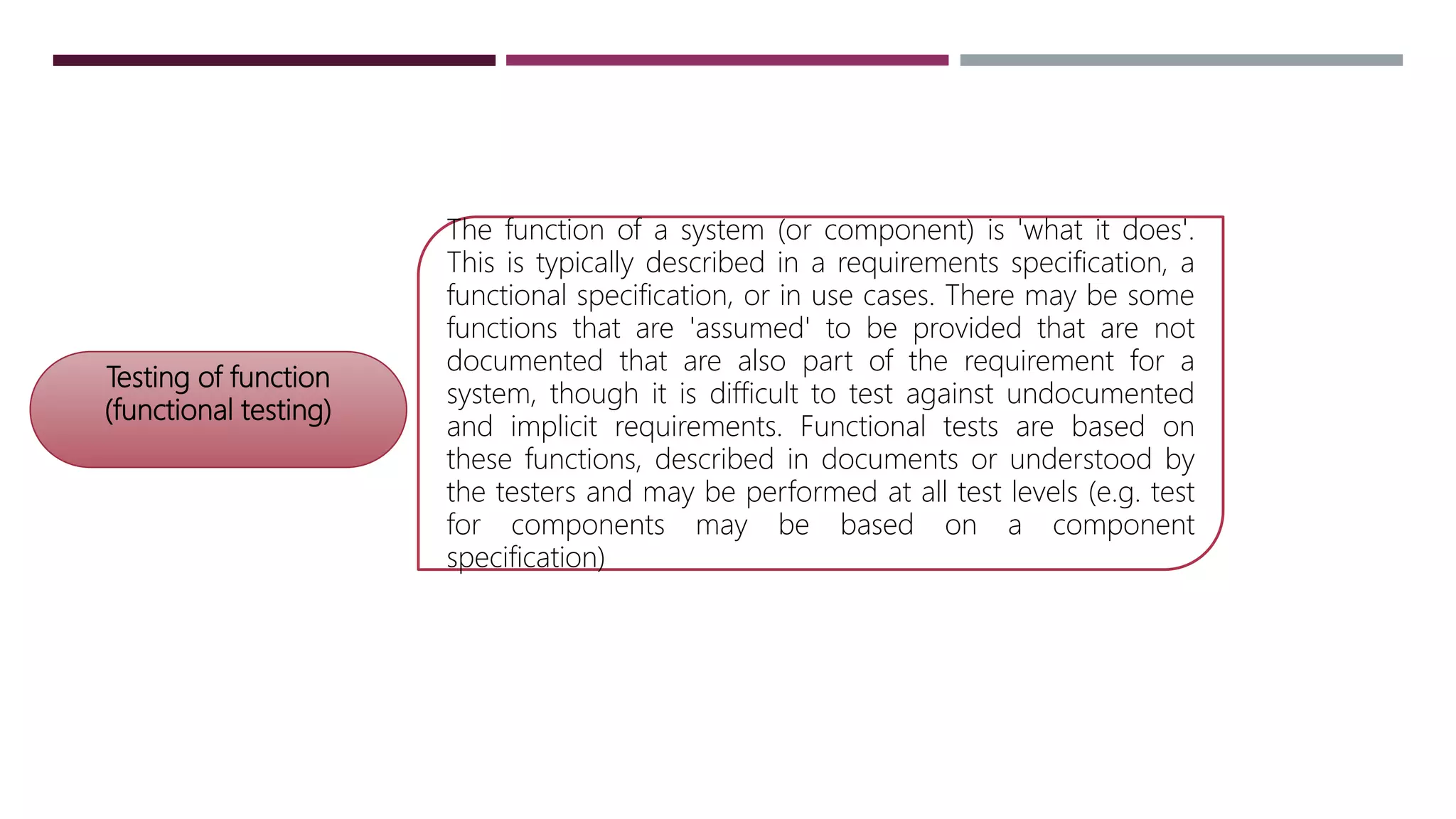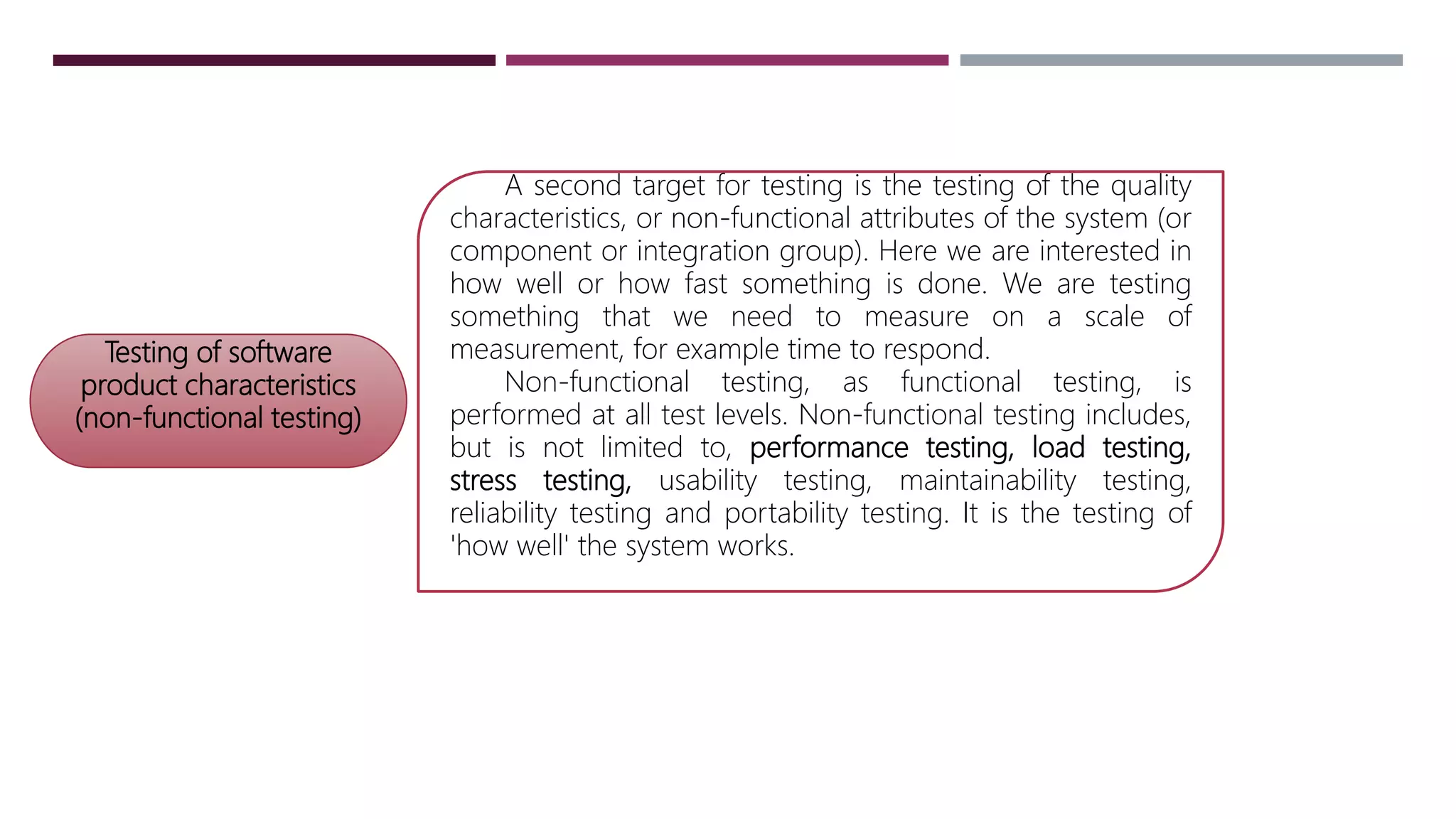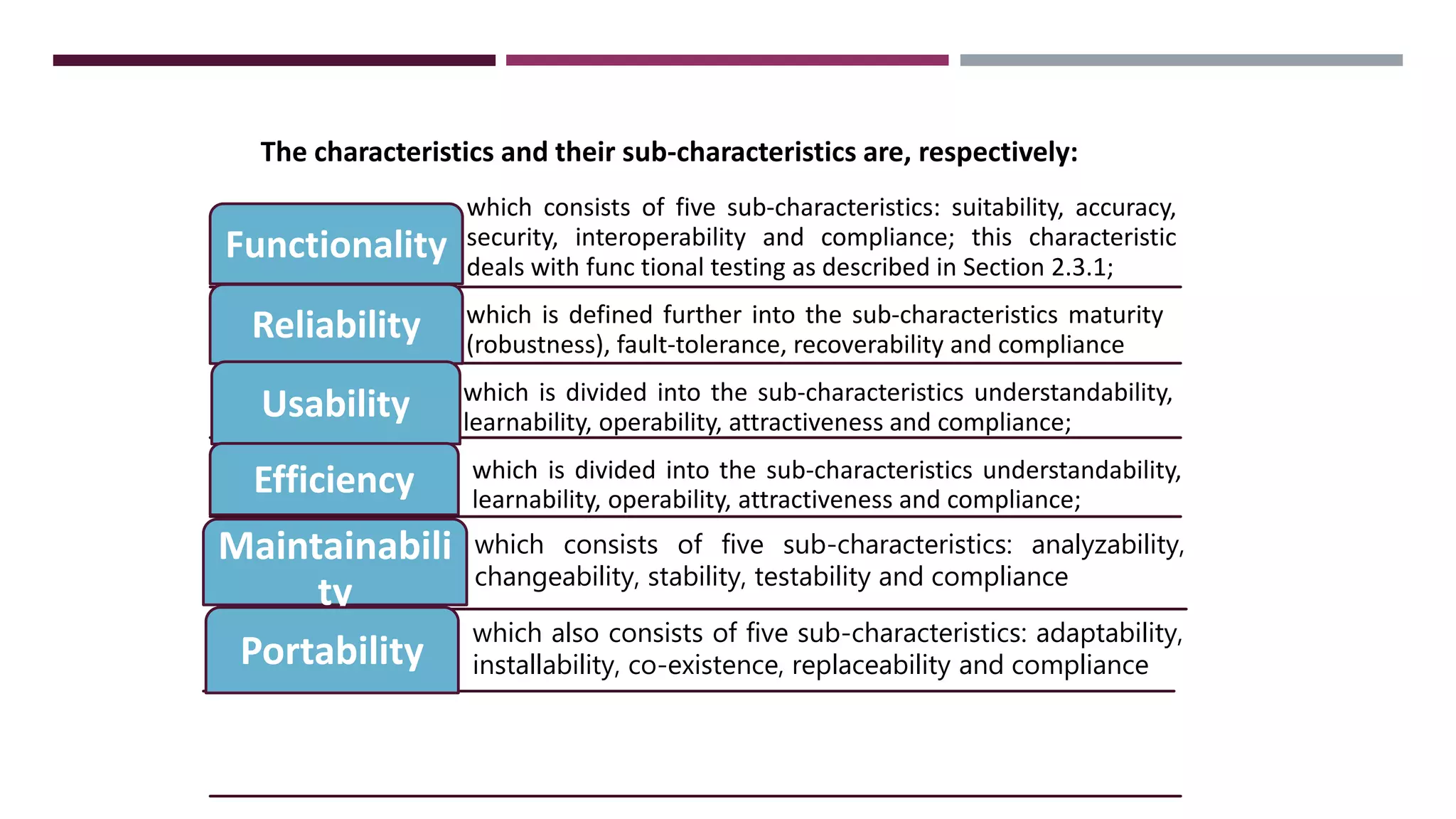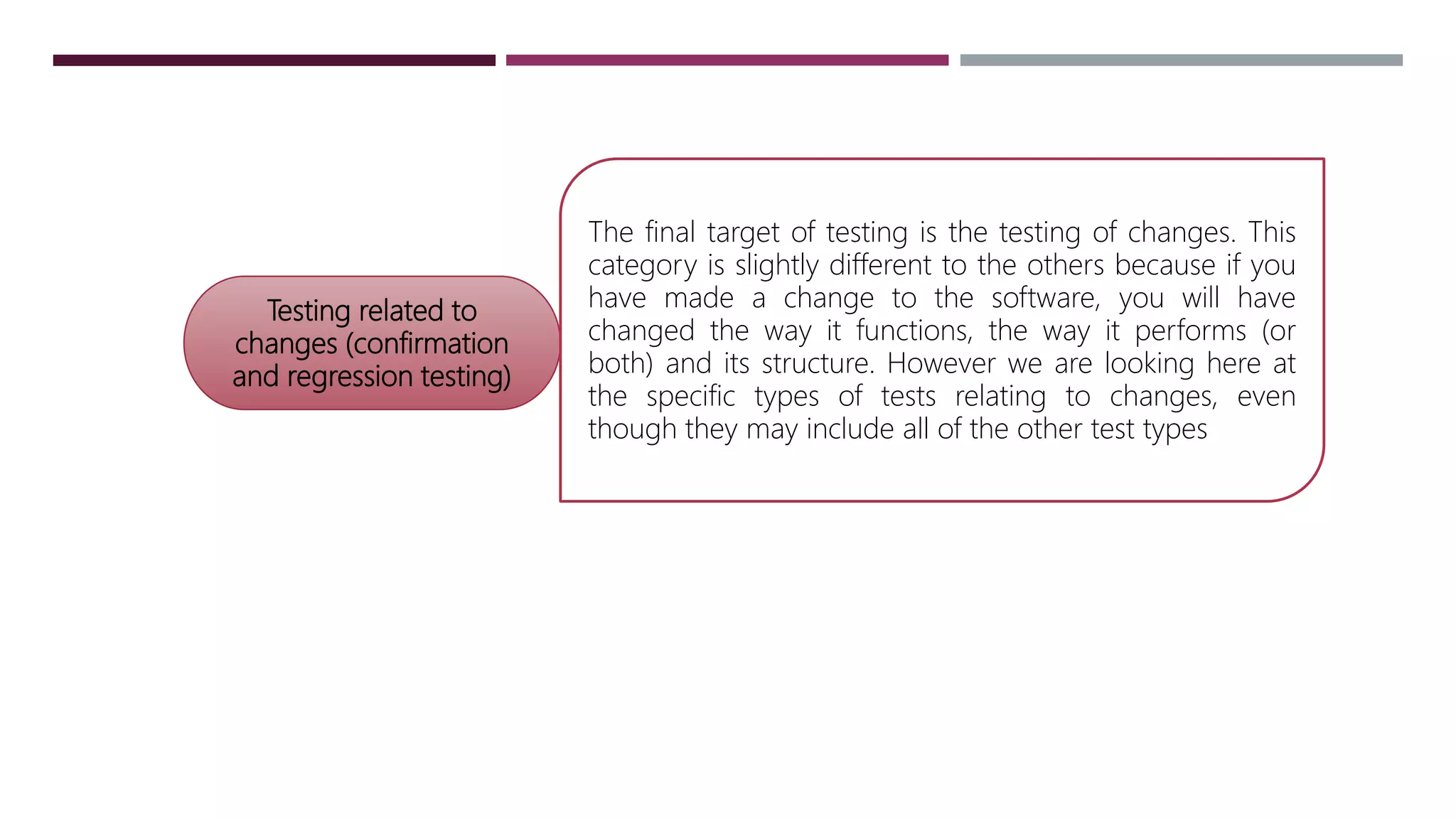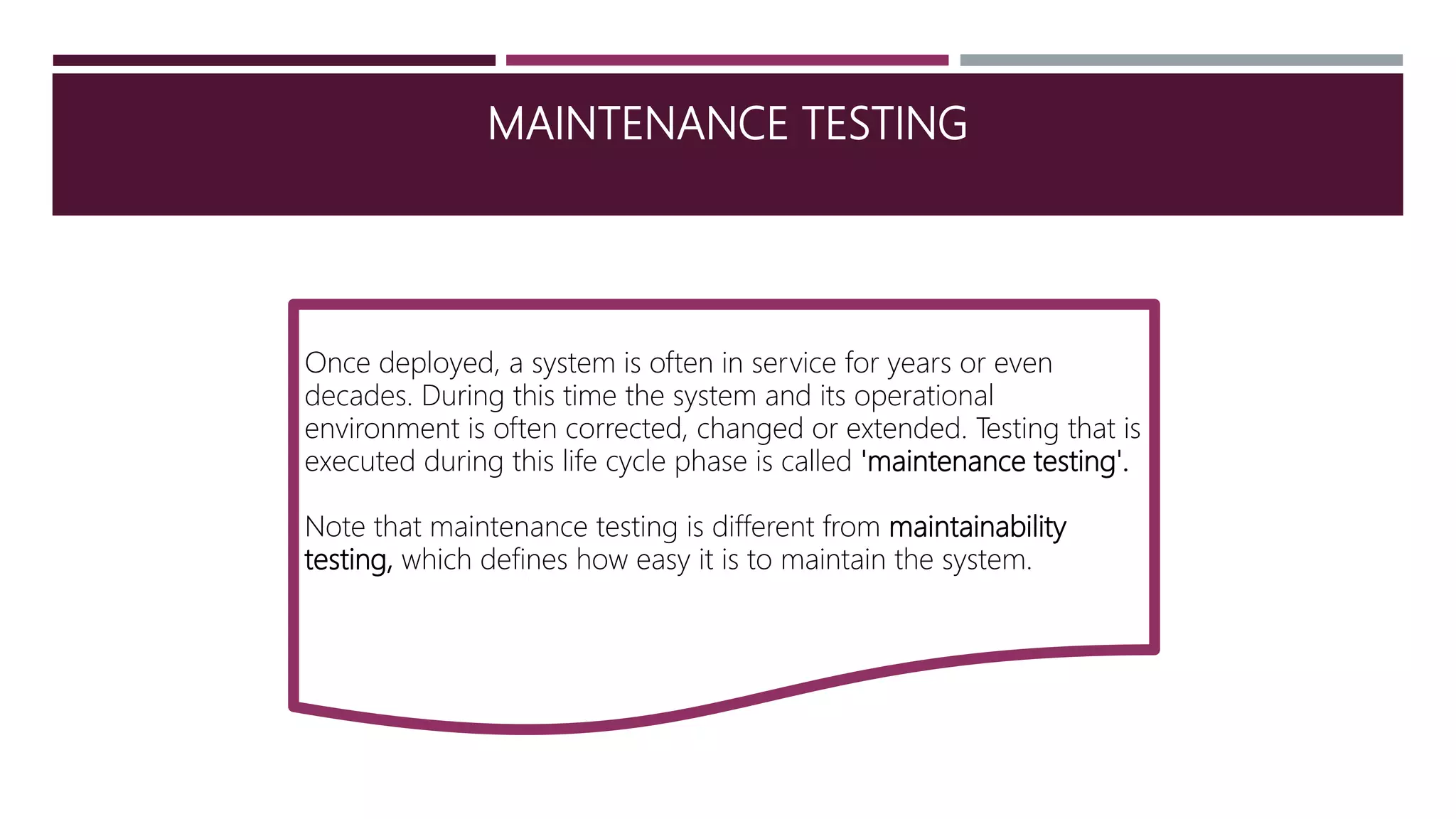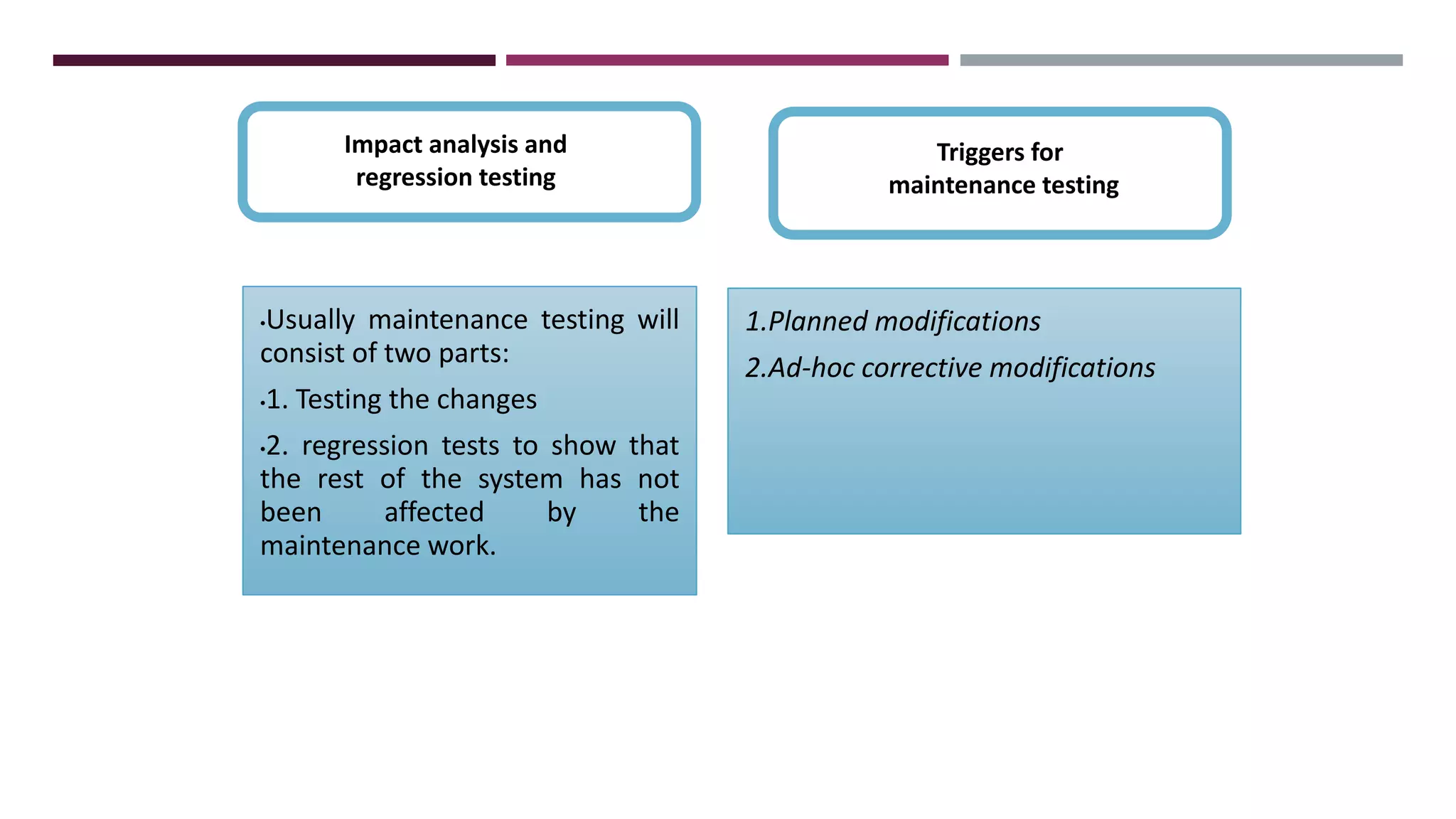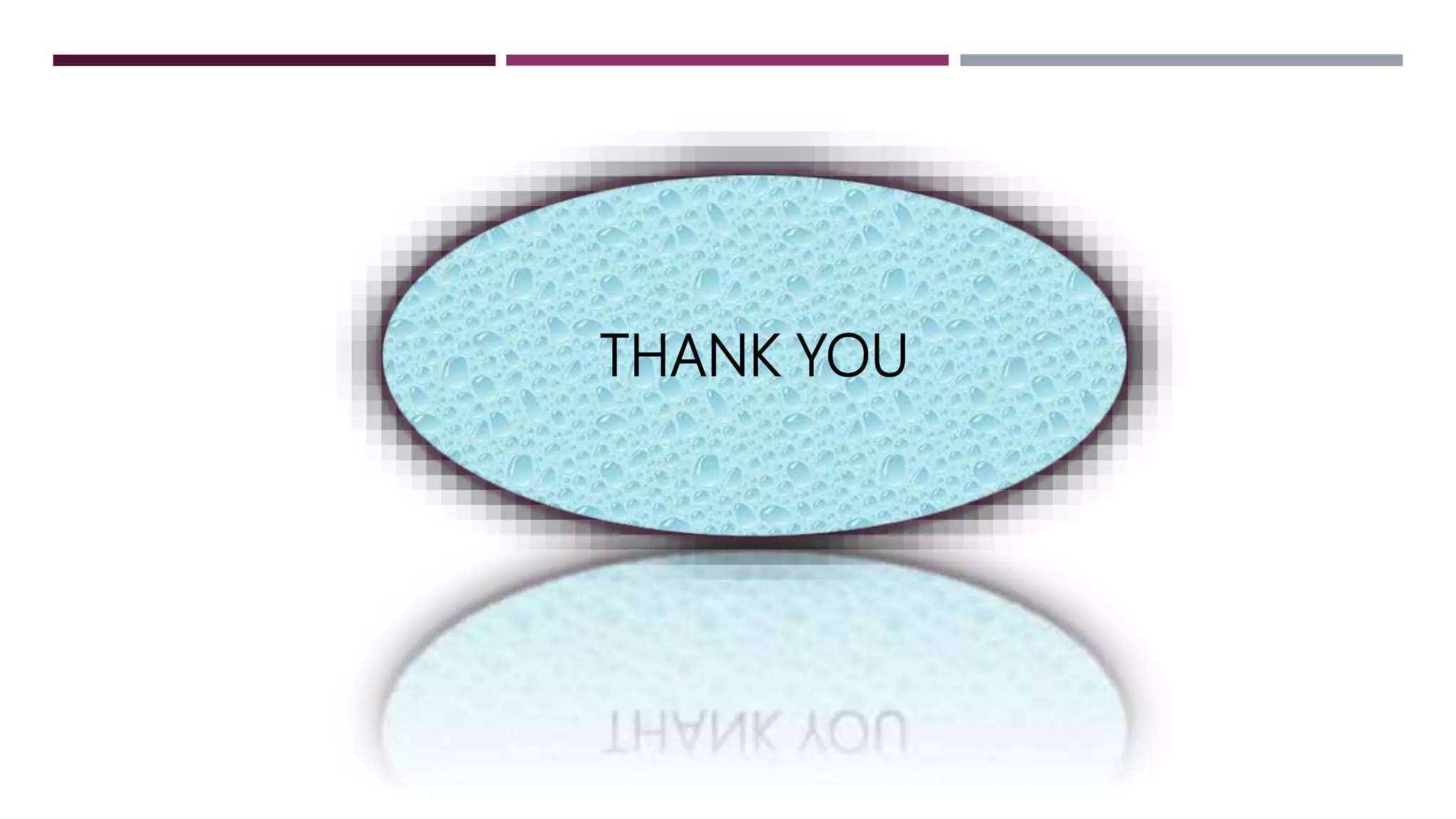Testing throughout the software life cycle is important to ensure quality. There are four main test levels: component testing, integration testing, system testing, and acceptance testing. Each level has specific objectives. Component testing checks individual software units. Integration testing checks interfaces between components. System testing evaluates the entire system. Acceptance testing validates user needs are met. Testing is iterative and occurs at each stage of development models like the V-model. Different testing types target functionality, performance, security and other characteristics. Testing also occurs during maintenance to check changes and ensure other features still work as intended. Thorough testing at all stages is key to catching defects early and delivering high quality software.
